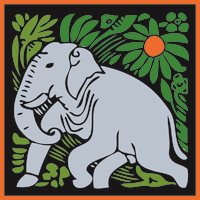Amy L. Allocco, associate professor of religious studies and director of the Multifaith Scholars program, presented material from her current research project, "Domesticating the Dead: Invitation and Installation Rituals in Tamil South India," which focuses on certain kinds of Hindu ritual relationships with the dead.
Amy L. Allocco recently presented a paper titled “Amid Flowers and Flames: Decorations for the Dead in Domestic Tamil Ritual” at The 46th Annual Conference on South Asia, held in Madison, Wisconsin. Her paper was part of the “Re-crafting Alaṅkāra: New Thoughts on an Ancient Practice” panel, which examined the ornamentation and decoration of the body of Hindu deities known as alaṅkāra.
 The paper analyzed the aesthetic conventions and ornamental vocabulary employed in the fashioning of a ritual vessel called a pativiḷakku in particular non-Brahmin ceremonies performed in Hindu South India. These little-known rituals invite deceased relatives (pūvāṭaikkāri) back into the home and install them as protective deities. The pativiḷakku is designed and created by members of the troupe of ritual musicians who officiate at these two-day ceremonies as well as drum and sing.
The paper analyzed the aesthetic conventions and ornamental vocabulary employed in the fashioning of a ritual vessel called a pativiḷakku in particular non-Brahmin ceremonies performed in Hindu South India. These little-known rituals invite deceased relatives (pūvāṭaikkāri) back into the home and install them as protective deities. The pativiḷakku is designed and created by members of the troupe of ritual musicians who officiate at these two-day ceremonies as well as drum and sing.
Allocco argued that there are two levels of alaṅkāram at work in this ritual context: the meticulous sculpting of the clay image and arranging of the flower decorations that performatively identify the pativiḷakku with the family deity of the sponsors and allow the this divinity to come into being; and the decoration of the deities and the dead with layered lyrical and musical descriptions that secure the deceased’s promise to “come home” and facilitate the needs of living kin. Her paper relied on the ethnographic fieldwork that she carried out in Chennai, the capital city of Tamil Nadu in South India, during the 2015-16 academic year with fellowship support from Fulbright-Nehru and the National Endowment for the Humanities/American Institute of Indian Studies.
This multidisciplinary panel sought to recraft scholars' understanding of what alaṅkāra is, what it does as an aesthetic practice, and what it says about Hindu notions of divinity. The session included presentations by scholars working in anthropology, art history, and religious studies: Archana Venkatesan (University of California, Davis), Cynthia Packert (Middlebury College), and Tulasi Srinivas (Emerson College). Tamara Sears (Rutgers, the State University of New Jersey) was the respondent.
At the Madison meeting Allocco also served as the respondent to a panel titled “Purity, Power, and Purpose: Non-elite Goddess Traditions in India and Their Encounters with Modernities.” This panel included three papers investigating the ways in which goddesses have become a crucial site through which devotees have negotiated a plurality of modernities: technological, legal, gendered, economic and medical, among others. These diverse papers drew attention to moments of adaptation and continuity within Hindu goddess traditions: from an exploration of how developing print technologies in colonial South India led to reconfigurations of devotion to the goddess Mariyamman across caste boundaries, to a discussion of the impact of the recent legal recognition of a “third gender” on male-to-female transgender individuals who identify as ritual experts in service of the Hindu goddess Ankalamman, to an analysis of the impact of encounters with biomedical modernity occasioned by the increasingly middle-class aspirations of devotees of the goddess Hadkai Mata, known as a healer of rabies.
The Annual Conference on South Asia draws more than 800 regional experts from all disciplines who present in more than 150 academic sessions over the course of the four-day meeting.


